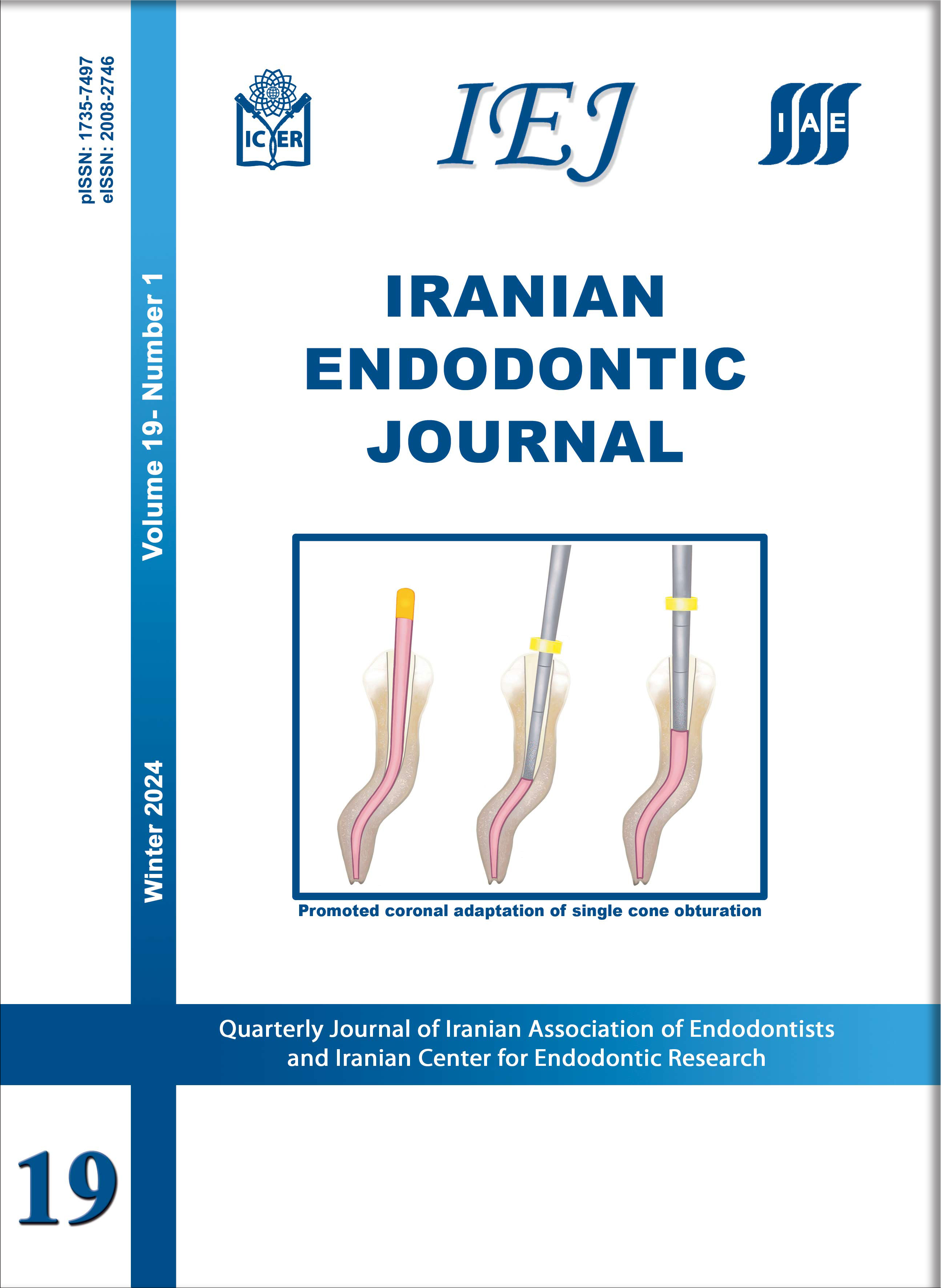Various Strategies for Pain-Free Root Canal Treatment
Iranian Endodontic Journal,
Vol. 9 No. 1 (2014),
24 December 2013,
Page 1-14
https://doi.org/10.22037/iej.v9i1.5126
Introduction: Achieving successful anesthesia and performing pain-free root canal treatment are important aims in dentistry. This is not always achievable and therefore, practitioners are constantly seeking newer techniques, equipments, and anesthetic solutions for this very purpose. The aim of this review is to introduce strategies to achieve profound anesthesia particularly in difficult cases. Materials and Methods: A review of the literature was performed by electronic and hand searching methods for anesthetic agents, techniques, and equipment. The highest level of evidence based investigations with rigorous methods and materials were selected for discussion. Results: Numerous studies investigated to pain management during root canal treatment; however, there is still no single technique that will predictably provide profound pulp anesthesia. One of the most challenging issues in endodontic practice is achieving a profound anesthesia for teeth with irreversible pulpitis especially in mandibular posterior region. Conclusion: According to Most investigations, achieving a successful anesthesia is not always possible with a single technique and practitioners should be aware of all possible alternatives for profound anesthesia.




